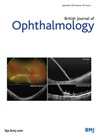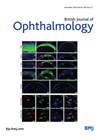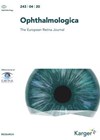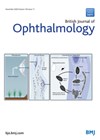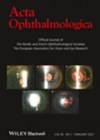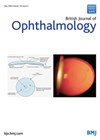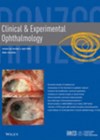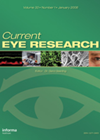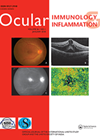
Journal Reviews
Incidence and clinical characteristics of paediatric keratitis
This is a retrospective, population-based study of a 10-year period from Mayo Clinic, USA between January 2000 and December 2009 of patients <19 years diagnosed with keratitis. Two-hundred and eight-five children were identified. An incidence of 78 per 100,000 and...
Visual acuity outcomes after cataract surgery in type 2 diabetes (NIDDM): the action to control cardiovascular risk in diabetes (ACCORD) study
This is a retrospective case-control study of 1136 eyes enrolled in the 784 ACCORD patients receiving cataract surgery between 2001-2014. 362 / 1136 eyes had gradable fundus photography for diabetic retinopathy (DR). Seven hundred and sixty-two eyes (67.1%) achieved 20...
Clinical outcomes of a supplementary sulcus IOL
In this retrospective study, the authors examined 31 eyes of 20 patients who had received a supplementary trifocal sulcus IOL in addition to a ‘bag-in-the-lens’ IOL. Implantation of a ‘bag-in-the-lens’ IOL requires the creation of anterior and posterior capsulotomies, followed...
Suture-less flanged IOL fixation vs. conventional sutured SF in IOL dislocation
The authors report the analysis of a prospective, comparative cohort study on 103 consecutive patients (103 eyes) with intraocular lens (IOL) dislocation who underwent vitrectomy with IOL removal and sutured scleral fixation (SF) (53 eyes) or flanged IOL fixation (50...
Visual and refractive outcomes and complications in FLACS versus CPS cataract surgery
This is a randomised, controlled study of 110 paired eyes from 55 patients that were randomised into either femtosecond laser-assisted cataract surgery (FLACS) or conventional phacoemulsification cataract surgery (CPS) groups. Visual, refractive outcomes, intraocular pressure (IOP) and complications were compared...
Uveitis‐Glaucoma‐Hyphaemia syndrome retrospective case-control study
The authors present the findings of a case-control study aiming to assess uveitis‐glaucoma‐hyphaemia (UGH) syndrome, focusing on the resolution, glaucoma development and risk factors. The authors compared three groups each containing 71 patients. Each group contained patients with UGH syndrome,...
Long-term outcome of scleral-sutured posterior chamber intraocular lens
This is a retrospective review of 392 consecutive cases in 349 patients who had scleral-sutured intraocular lens (IOL) due to aphakia, subluxated or luxated IOL, over a 10-year period in one centre from Barcelona. Preop and postop data were collected...
Accuracy of intraocular lens power calculations in paediatric eyes
A study comparing the accuracy of the SRK II, SRK/T, Hoffer Q, Holladay 1, T2 and Super formula in predictive refractive outcomes in children undergoing primary IOL insertion into the capsular bag following cataract surgery. A total of 377 eyes...
Lens surgery in patients with lens subluxation misdiagnosed as primary angle-closure glaucoma
Lens subluxation can be caused by many conditions including Marfan syndrome and other hereditary conditions, and blunt trauma. Lens displacement can cause pupillary block and angle closure. This is commonly misdiagnosed as primary angle closure glaucoma (PACG), which can lead...
Cataract in patients with pseudoexfoliation syndrome
The authors present a prospective comparative study in 43 patients with (group 1) or without (group 2) pseudoexfoliation (PXF) undergoing cataract surgery. Anterior capsule samples were obtained in all patients and analysed for signs of apoptosis by using special staining...
Optical quality difference between monofocal and multifocal intraocular lenses
It is well known that multifocal intraocular lenses (IOLs) can generate more than one focus to restore distance and near vision, but patients may experience adverse optical phenomena such as decreased contrast sensitivity and induced glare or halos. The authors...
Bandage contact lens cultures after corneal collagen cross-linking
Corneal collagen cross-linking (CCL) is a treatment modality that has been shown to stop the progression of keratoconus. There have also been reports that CCL acts as an antimicrobiologic agent in treating resistant microbial keratitis. This study aimed to investigate...

